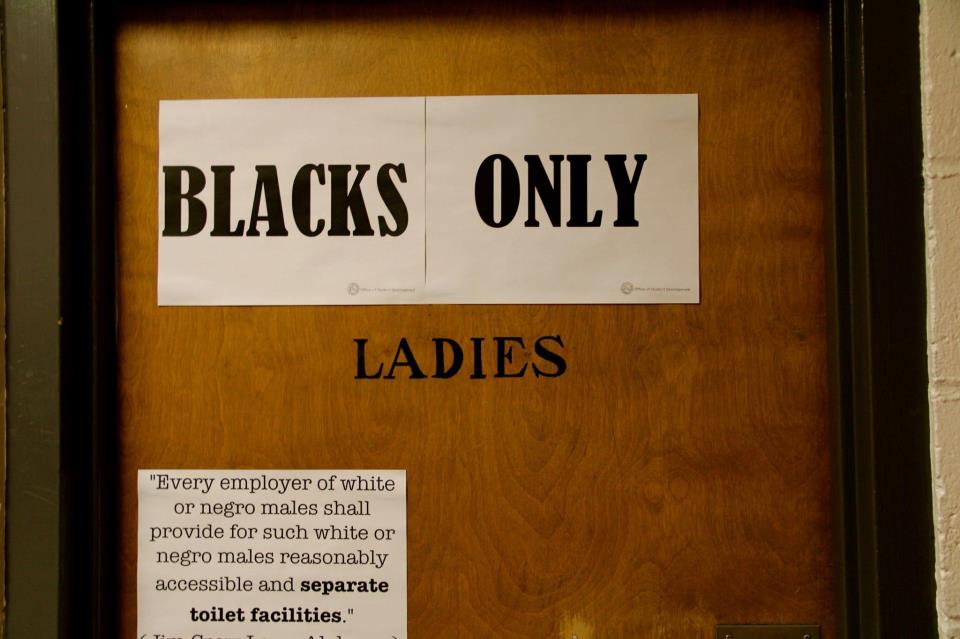
Contributed photo
The signs elicited a variety of reactions, from dislike in some students to admiration in others.
Signs stating “BLACKS ONLY” and “WHITES ONLY” covered doorways and water fountains in the Mann Student Center a few weeks ago.
Along with these signs were explanations of the Jim Crow laws and the words, “So we never forget…”
The African-American, Latino, Asian, Native-American club at ENC posted these signs to advertise their Black History Month event.
The event started with a spoken word poem from Christina Saint-Pierre about racism.
Following that, students participated in a “moving museum” where seven club members spread out through Hebrews, and students went to each to learn about famous African-Americans.
The people mentioned ranged from First Lady Michelle Obama to Wilma Rudolph, an Olympian who overcame a disability and won several medals.
Dr. Eric Severson, the club’s faculty adviser, led the evening’s discussions.
“The art of being a sincere, authentic Christian in the world is learning to live alongside people with whom you disagree,” said Severson.
He went on to ask the group to share how they felt about the signs that ALANA posted.
“While putting [the signs] up I got a feeling of being in that time period,” said ALANA member Saint-Pierre.
She continued, “Sometimes we forget, as a community, to step back into the dirty parts … [the signs] make you reflect not only on the celebration, but also on the part that people try to brush away.”
The signs elicited a variety of reactions, from dislike in some students to admiration in others.
One student said, “I was a little offended by it; I did not like the signs at all, but I applauded ENC for being able to talk about it.”
“These signs went outside the boundaries and I think that is one of the exciting and interesting things about them,” said Severson.
“I know this might not have had the best reaction in our school, but it will force people to think about Black History Month,” said ALANA President Ace Carradine.
Carradine shared the meaning of the signs.
“The biggest thing was to be bold. If those signs would have said something that was acceptable, you wouldn’t have read them, you wouldn’t have noticed, and we wouldn’t be having this discussion … it was [supposed] to upset you a little bit,” she said.
Melissa Flores emphasized the fact that “what ALANA really tries to do is challenge minds, educate, and promote the ideas of what diversity really means and what it should be on this campus.”
These signs have caused students to pay attention to ALANA, a group that hasn’t had the best reputation on campus in the past.
“[Our reputation has] definitely gotten better and this year we have done so many more events … we are doing at least two a month,” said Carradine.
“I feel like a lot of our events are really fun, and really good, but people don’t come just because it says ALANA on it,” she added.
Carradine has heard people call ALANA racist, while their mission is “…to provide a space where cultural and racial diversity can be expressed and celebrated.”
“It hurts us and our group and what we stand for, and it diminished the reputation that we could have and the things that we could do,” said Carradine.
“Whether you had a negative reaction or a positive reaction … just know and remember that you were able to step out of that moment and realize, ‘Thank God, I’m not in that moment anymore,’” said Saint-Pierre.

